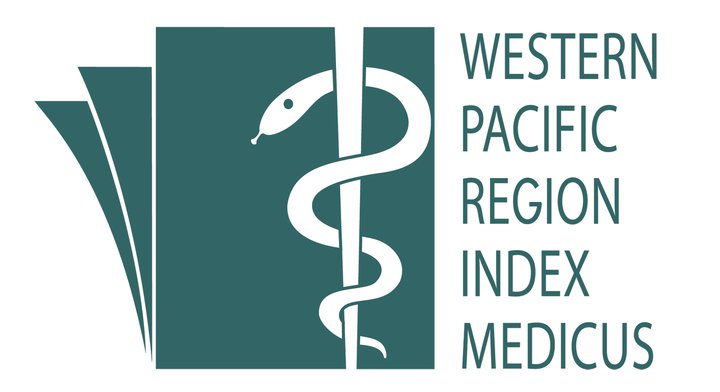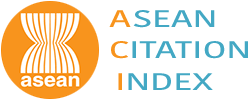Prevalence and Socio-demographic Determinant of Overweight and Obesity among Malaysian Adult.
Keywords:
Overweight, Obesity, Adult, MalaysiaAbstract
Introduction: Overweight and obesity is a major public health problem in the Malaysia. This study aims to determine the prevalence of overweight and obesity among the Malaysian adult population and their association with socio demographic characteristics (gender, ethnic, and age groups) amongst Malaysian adults’ population. Methods: A total of 17,257 adults aged 18 years and older (8,252 men, 9,005 women) were assessed for BMI status, with a response rate of 97.8%, through a household survey. Results: All socio-demographic factors were consistently associated with higher chance of being overweight (except gender and location) and obese (except location and household income). The prevalence of overweight did not differ among the males and females but obesity was more pronounced among females. Indians took the lead in being overweight and obese and followed by the Malays and the least being the Chinese. The prevalence of overweight and obesity increased until the age group of 50-59 years old before decreased in age group of 60-69 years old and above 70 years old. Overweight and obesity were more prevalent among the widower and divorcee and the lower education populations. The unpaid workers had higher prevalence of overweight, where else, homemakers, government employees, retirees and unpaid workers were obese.  Conclusion: Our data indicate a high prevalence of overweight and obesity in the population. Several sociodemographic characteristics are associated with both overweight and obesity. This study highlight measures to improve the current national programmes to combat overweight and obesity.References
World Health Organization. Obesity: Preventing and Managing the Global Epidemic. Report of a WHO Consultation on Obesity. Geneva. 1998.
World Health Organization. World Health Organization MONICA Project: risk factor. International Journal of Epidemiology. 1989;18(suppl 1): S46-S55.
Ministry of Health Malaysia. Report of The Second National Health and Morbidity Survey 1996. Institute for Public Health. Kuala Lumpur. 1997.
Institute for Public Health. National Health and Morbidity Survey 2011, Volume I. Ministry of Health, Malaysia. 2008.
Institute for Public Health. National Health and Morbidity Survey 2011, Volume II: Non-Communicable Disease. Ministry of Health, Malaysia. 2011.
Moghaddam AA, Woodward M, Huxley R. Obesity and risk of colorectal cancer: a meta-analysis of 31 studies with 70,000 events. Cancer Epidemil Biomakers Prev. 2007;16:2533-47.
Hoelscher DM, Day RS, Scheurer M.E. (2004). Measuring the prevalence of overweight in Texas schoolchildren. American Journal of Public Health. 94(6);1002-1008.
Ismail MN, Chee SS, Nawawi H, Yusoff K, LimTO, James WPT. Obesity in Malaysia. Obes Rev. 2002;3:203-8
Khambalia AZ and Seen LS. Trends in overweight and obese adults in Malaysia (1996-2009): a systematic review. Obes Rev. 2010;11:403-12.
Institute for Public Health. Technical Manual for Anthropometric Measurement. National Health and Morbidity Survey 2011. Ministry of Health, Malaysia. 2011.
Geeta A, Jamaiyah H, Safiza MN, Khor GL, Kee CC, Ahmad Ali Z, Suzana S, Rahmah R, Faudzi A. Reliability, technical error of measurements and validity of instruments for nutritional status assessment of adults in Malaysia. Singapore Medical Journal. 2009; 50 (10): 1013-1018.
Economic Planning Unit. Tenth Malaysia Plan 2011-2015. Economic Planning Unit, Prime Minister Department, Malaysia. 2010.
Institute for Public Health. National Health and Morbidity Survey 2011, Volume I: Methodology and General Findings. Ministry of Health, Malaysia. 2011.
Moghimi- Dehkordi B, Safaee A, Vahedi M, Pourhoseingholi A, Pourhoseingholi MA, Ashtari S, and Zali MR. Overweight and Obesity and Related Factors in Urban Iranian Population Aged Between 20 to 84 Years. Annals of Medical Health Science Research. 2013;3(2): 171- 176; doi 10.4103/2141-9248.113656
Reynolds K, Gu DF, Whelton PK, Wu X, Duan X, Mo J, and Jiang He J. Prevalence and Risk Factors of overweight and Obesity in China; OBESITY. 2007; Vol: 15 No 1 page 10-18
World Health Organization. Technical Report Series 894: Obesity: Preventing and Managing the Global Epidemic. Geneva. 2000.
Ghosh A, Bhagat M, Das M, Bala SK, Goswami R and Pal S. Prevalence of cardiovascular disease risk factors in people of Asian indian origin: Age and sex variation. Journal of Cardiovascular Disease Research. 2010;1(2): 81-85
Jitnarin N, Kosulwat V, Rojroongwasinkul N, Boonpraderm A, Haddock C.K. and Poston W.S.C. Risk Factors for Overweight and Obesity among Thai Adults: Results of the National Thai Food Consumption Survey. Nutrients. 2010; 2: 60-74; doi: 10.3390/nu2010060.
Abdeen Z, Jildeh C, Dkeideek S, Qaasrawi R, Ghannam I, and Al Sabbah H. Overweight and Obesity among Palestinian Adults: Analyses of the Anthropometric Data from the First National Health and Nutrition Survey (1999-2000). Journal of Obesity. 2012; Volume 2012, Article ID 213547, 12 pages; (doi: 10.1155/2012/213547).
Suzana, S., Kee, C.C., Jamaludin, A.R., Noor Safiza, M.N., Khor, G.L., Jamaiyah, H., Geeta, A., Ahmad Ali, Z., Rahmah, R., Ruzita, A.T., Ahmad Fauzi, Y. The Third National Health and Morbidity Survey: Prevalence of Obesity, and Abdominal Obesity Among the Malaysian Elderly Population. Asia-Pacific Journal of Public Health. 2012; 24(2): 318-329.
Low S, Chin M.C., Yap M.D. Review on Epidemic of Obesity. Annals Academy of Medicine Singapore. 2009;Vol 38 No 1 : page 57-65
Veghari G, Sedaghat M, Maghsodlo S, Banihashem S, Moharloei P, Angizeh A, Tazik E, Moghaddammi A. Influence of education in the prevalence of obesity in Iranian northern adults. Journal of Cardiovascular Disease Research. 2013; 4(2013) 30-33.
Malin Kark and Nina Karnehed. Weight status at age 18 influences marriage prospects. A population-based study of Swedish men. BMC Public Health. 2012;12.833; http://www.biomedcentral.com/1471-2458/12/833
Navadeh S., Sajadi L., Mirzazadeh A., Asgari F., and Haghazali M. Housewives’ Obesity determinants Factors in Iran; National Survey- Stepwise Approach to Surveillance. Iran Journal of Public Health. 2011;40(2): 87-95
Gan G.L and Pang J. Obesity in Singapore, Prevention and Control. The Singaporean Family Physician. 2012; Vol 38 No 1 Jan – Mar 2012: 8
Verney M., Malon A, Oleko A, Salanave B, Roudier C, Szego E, Deschamps V, Hercberg S and Castetbon K. Association of socioeconomic status with overall overweight and central obesity in men and women: the French Nutrition and Health Survey 2006; BMC Public Health. 2009;9:215; doi: 10.1186/147-2458-9-215
Roemling C. and Qaim M. Obesity trends and determinants in Indonesia. Appetite. 2012;58 1005-1013. doi : 10.1016/j.appet.2012.02.053
Flegal, K M; Margaret D. Carroll, Brian K. Kit; Cynthia I. Ogden. Prevalence of Obesity and Trends in the Distribution of Body Mass Index Among US Adults, 1999-2010. JAMA, February 1, 2010-Vol 307, No.5
Midthjell K, Lee C.M.Y, Langhammmer A, Krokstad S, Holmen T.L, Hveem K, Colagiuri S, and Holmen J. Trends in overweight and obesity over 22 years in a large adult population: the HUNT study, Norway. Clinical Obesity. 2013 February; 3(1-2): 12-20. Doi:10.1111/cob.12009
Sherina M.S and Rampal L. The prevalence and factors associated with obesity among adult women in Selangor, Malaysia. Asia Pacific Family Medicine 2009, 8:2 (doi:10.1186.1447-056X-8-2)
Downloads
Published
How to Cite
Issue
Section
License
IJPHR applies the Creative Commons Attribution (CC BY) license to articles and other works we publish. If you submit your paper for publication by IJPHR, you agree to have the CC BY license applied to your work. Under this Open Access license, you as the author agree that anyone can reuse your article in whole or part for any purpose, for free, even for commercial purposes. Anyone may copy, distribute, or reuse the content as long as the author and original source are properly cited. This facilitates freedom in re-use and also ensures that IJPHR content can be mined without barriers for the needs of research.





